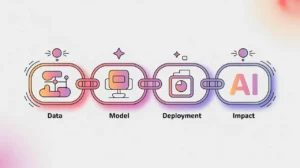Importance of Measurement for Improvement vs Accountability
Measurement for Improvement vs Accountability highlights the distinction between using data to drive learning and adaptation versus using it to meet compliance and reporting requirements. Measurement for improvement emphasizes continuous feedback, iteration, and course correction. Measurement for accountability focuses on demonstrating results to funders, regulators, or oversight bodies. Its importance today lies in the need to balance both, especially as AI and digital tools generate vast amounts of data that can support learning but also create burdensome reporting demands.
For social innovation and international development, this distinction matters because organizations must serve communities effectively while also satisfying external accountability expectations. Prioritizing improvement ensures programs evolve in response to real needs, while accountability maintains trust and legitimacy.
Definition and Key Features
Improvement-focused measurement draws from adaptive management and quality improvement traditions, where data is used to test hypotheses and refine practice. Accountability-focused measurement is rooted in donor reporting, regulatory compliance, and performance audits. Many organizations must navigate both, often under pressure to prioritize accountability over learning.
It is not the same as monitoring and evaluation in general, which encompasses both. Nor is it equivalent to impact evaluation alone, which may emphasize accountability without enabling ongoing improvement. This framework calls for balance and clarity of purpose in measurement strategies.
How this Works in Practice
In practice, measurement for improvement might involve rapid-cycle feedback loops in an education pilot, using AI-generated analytics to adjust lesson delivery. Accountability measurement could involve formal outcome reporting to donors at the end of a project cycle. Ideally, the same data systems can support both, but design choices matter, such as ensuring dashboards are accessible for frontline staff as well as funders.
Challenges include resource constraints, donor requirements that prioritize accountability over learning, and cultural barriers to using data constructively rather than punitively. AI systems can exacerbate these challenges by producing more data than organizations can meaningfully use.
Implications for Social Innovators
Balancing measurement for improvement and accountability strengthens mission-driven work. Health programs can use AI dashboards to monitor clinical quality while still reporting patient outcomes to funders. Education initiatives can track learning progress to adapt instruction, while maintaining compliance with national reporting requirements. Humanitarian agencies can evaluate pilot performance for improvement while reporting aid delivery metrics to donors. Civil society groups often push for frameworks that prioritize learning alongside accountability, to avoid burdening communities with excessive data demands.
By aligning measurement with both improvement and accountability, organizations ensure that data serves not just compliance, but also continuous learning and better outcomes for communities.







